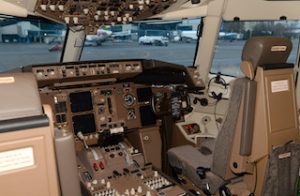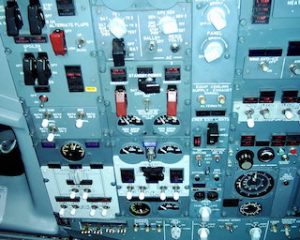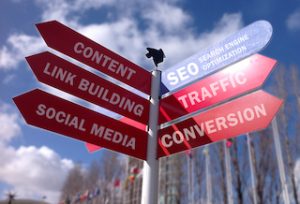Artificial Intelligence In Boeing Flight Manufacturing
 Boeing, the world’s largest aerospace manufacturer, has long been at the forefront of innovation in the aviation industry. Over the years, the company has adopted cutting-edge technologies to improve both the design and manufacturing of its aircraft, striving to enhance performance, efficiency, and safety. Among these innovations, artificial intelligence has emerged as a key driver in transforming Boeing’s manufacturing processes.
Boeing, the world’s largest aerospace manufacturer, has long been at the forefront of innovation in the aviation industry. Over the years, the company has adopted cutting-edge technologies to improve both the design and manufacturing of its aircraft, striving to enhance performance, efficiency, and safety. Among these innovations, artificial intelligence has emerged as a key driver in transforming Boeing’s manufacturing processes.
AI’s applications in Boeing’s manufacturing operations are multifaceted, ranging from optimizing the design phase to improving production timelines and ensuring better quality control. By leveraging machine learning algorithms, predictive analytics, computer vision, and automation, Boeing is reshaping how aircraft are built and assembled. This article explores how Boeing is incorporating AI into its flight manufacturing processes, and how these advancements are poised to redefine the future of aerospace production.
Role of AI in Boeing
The aerospace sector is an industry marked by its complexity, precision, and safety requirements. In this high-stakes environment, AI’s ability to analyze vast amounts of data, optimize complex systems, and enhance decision-making processes is invaluable. AI can improve every aspect of flight manufacturing, from the design and prototyping of new aircraft to the assembly and quality assurance stages. The use of AI in Boeing enables the company to reduce costs, increase production rates, ensure the reliability of aircraft components, and ultimately deliver safer, more efficient aircraft to airlines and operators worldwide.
1) AI in aircraft design and simulation
The design process is one of the most critical phases in aircraft manufacturing. In the past, engineers and designers relied heavily on traditional methods of simulation and testing to create and refine aircraft designs. However, AI has revolutionised this aspect of the design process by offering more dynamic and data-driven approaches to both the creation and testing of new concepts.
AI-driven design optimisation
AI algorithms, particularly machine learning models, can analyse existing aircraft designs, historical performance data, and simulation results to optimise new aircraft models. These algorithms can identify inefficiencies in design, predict the impact of different materials on weight and performance, and recommend adjustments to improve aerodynamics, fuel efficiency, and passenger comfort.
For example, AI can assess the performance of different wing shapes or engine configurations, simulate their behavior under various flight conditions, and suggest optimal configurations that might otherwise be overlooked by traditional design processes. By integrating AI into the design process, Boeing can reduce the number of design iterations needed, streamline the development timeline, and ensure that each new aircraft model is as efficient as possible.
Advanced simulation and virtual testing
Another critical application of AI in aircraft design is the use of virtual simulations and digital twins. Boeing leverages AI-powered simulations to create digital replicas of both individual components and the entire aircraft. These virtual models allow Boeing’s engineers to run numerous tests without needing to physically build prototypes, which is both time-consuming and costly.
AI-enabled simulations can replicate complex flight conditions, environmental stresses, and failure scenarios, providing valuable insights into how the aircraft will perform under real-world conditions. Through these advanced simulations, Boeing can test new designs for aerodynamics, structural integrity, and system interactions much faster and more cost-effectively than traditional testing methods.
2) AI in manufacturing process optimisation
Once the design is finalized, Boeing uses AI to optimize its manufacturing processes, ensuring greater efficiency and precision at every stage of production. Manufacturing an aircraft involves the assembly of thousands of intricate parts, many of which are unique to each model. AI is instrumental in streamlining this complex process, helping Boeing produce high-quality aircraft while reducing production time and costs.
Predictive maintenance and equipment monitoring
AI’s role in predictive maintenance is transforming how Boeing manages its manufacturing equipment and facilities. Using sensor data and machine learning algorithms, Boeing can monitor the condition of critical machinery in real-time, detecting any potential issues before they result in costly downtime. This proactive approach reduces the need for unscheduled maintenance, ensuring that production schedules remain on track and equipment performs optimally.
For example, AI-powered sensors can detect vibrations, temperature changes, or abnormal patterns in machines that could signal wear and tear. By analysing this data, AI systems can predict when a machine is likely to fail and schedule maintenance at the most convenient time—before the problem disrupts production.
AI-driven supply chain optimisation
An efficient and responsive supply chain is crucial to aircraft manufacturing. Boeing uses AI to improve inventory management and supply chain logistics. AI algorithms analyse historical data, current demand, and various external factors to predict potential supply chain disruptions and optimise procurement processes.
AI can also track the status of parts as they move through the supply chain, ensuring that components are delivered to the right location at the right time. This not only minimizes delays but also reduces waste and storage costs. By optimising its supply chain with AI, Boeing can maintain a consistent flow of materials and avoid the costly problem of production stoppages due to missing components.
3) Automation and robotics in aircraft assembly
Aircraft assembly involves a high degree of precision, with each part needing to fit perfectly into place. AI has greatly enhanced robotics and automation in Boeing’s manufacturing facilities, improving both the speed and accuracy of assembly.
Collaborative robots
AI is integrated into Boeing’s assembly lines through the use of collaborative robots. Unlike traditional industrial robots, which are typically housed in separate enclosures, cobots are designed to work alongside human workers. These robots are equipped with AI-driven sensors and algorithms that allow them to interact safely and efficiently with humans in shared spaces.
At Boeing, cobots are used to assist with tasks such as drilling, fastening, and painting. For example, AI-powered robots can be used to drill holes in the fuselage or wings with extreme precision, ensuring that each component is perfectly aligned. The AI systems help adjust the robot’s actions in real-time, based on feedback from sensors, to correct any deviations from the required specifications.
The use of AI-driven cobots not only improves precision but also reduces the physical strain on workers, allowing them to focus on more complex tasks that require human expertise. This collaboration between human workers and robots leads to faster production rates, improved quality control, and reduced risk of human error.
Autonomous guided vehicles
AI-powered autonomous guided vehicles play a vital role in moving parts and materials between different stages of the production line. These vehicles are equipped with AI navigation systems that allow them to travel seamlessly through Boeing’s manufacturing facilities, avoiding obstacles, and optimizing routes based on real-time data.
By automating the movement of materials and components, Boeing reduces the risk of delays caused by human labor or manual transportation. AGVs also ensure that the right materials are delivered exactly where they are needed, minimising downtime and improving overall production efficiency.
4) AI in quality control and inspection
Ensuring that every aircraft component meets stringent quality standards is essential in the aviation industry. AI has become a critical tool in Boeing’s quality control and inspection processes, enabling the company to identify defects and deviations with far greater accuracy and speed than traditional methods.
Computer vision and defect detection
Boeing uses AI-powered computer vision systems to inspect and identify defects in materials and components. These systems are capable of analyzing high-resolution images and videos of parts, detecting issues such as cracks, dents, or misalignments that might be difficult for human inspectors to spot.
Using machine learning algorithms, AI systems can continuously improve their ability to identify defects by learning from a database of images and outcomes from previous inspections. This allows AI to detect even the most subtle flaws, ensuring that only the highest-quality parts are used in aircraft assembly.
Machine learning for process monitoring
In addition to visual inspections, Boeing also uses AI to monitor and control various manufacturing processes in real-time. By analyzing sensor data and production logs, AI systems can identify anomalies or deviations from the desired production standards. For example, AI can monitor the quality of the welding or bonding process in real-time, ensuring that each joint or seam meets the required specifications.
If any irregularities are detected, AI systems can automatically alert operators, enabling them to make corrective actions before any faulty parts are integrated into the aircraft. This significantly reduces the likelihood of quality issues being discovered later in the production process or after the aircraft has been delivered.
5) AI for sustainable manufacturing
As Boeing continues to prioritize sustainability in its operations, AI is playing an important role in helping the company reduce its environmental footprint. AI is used to optimize energy usage in manufacturing facilities, minimize material waste, and develop new, more sustainable materials for aircraft construction.
AI-driven analytics help Boeing monitor and reduce energy consumption in its factories by adjusting machinery usage patterns and optimizing production schedules. By ensuring that energy is used efficiently, Boeing can lower its carbon footprint and operational costs.
AI is also being leveraged to explore more sustainable manufacturing practices, such as the use of lightweight composite materials that reduce fuel consumption in flight. AI models can simulate the performance of these materials, evaluate their impact on aircraft design, and help Boeing select the most eco-friendly options.
In summary
Boeing’s use of Artificial Intelligence in its flight manufacturing processes represents a significant leap forward in the aerospace industry. By incorporating AI into design optimization, manufacturing process management, robotics, quality control, and sustainability initiatives, Boeing is not only increasing efficiency and reducing costs but also enhancing the safety and quality of its aircraft.
AI allows Boeing to better manage its supply chain, improve production timelines, and ensure that each aircraft meets the high standards required for air travel. As AI continues to evolve, Boeing’s manufacturing processes will likely become even more efficient, sustainable, and innovative, paving the way for a new era of aerospace production that is faster, smarter, and more reliable.
As the aerospace industry continues to embrace AI-driven solutions, Boeing’s leadership in this area is setting the stage for the future of flight manufacturing, where AI and human expertise work in tandem to create the next generation of aircraft.










